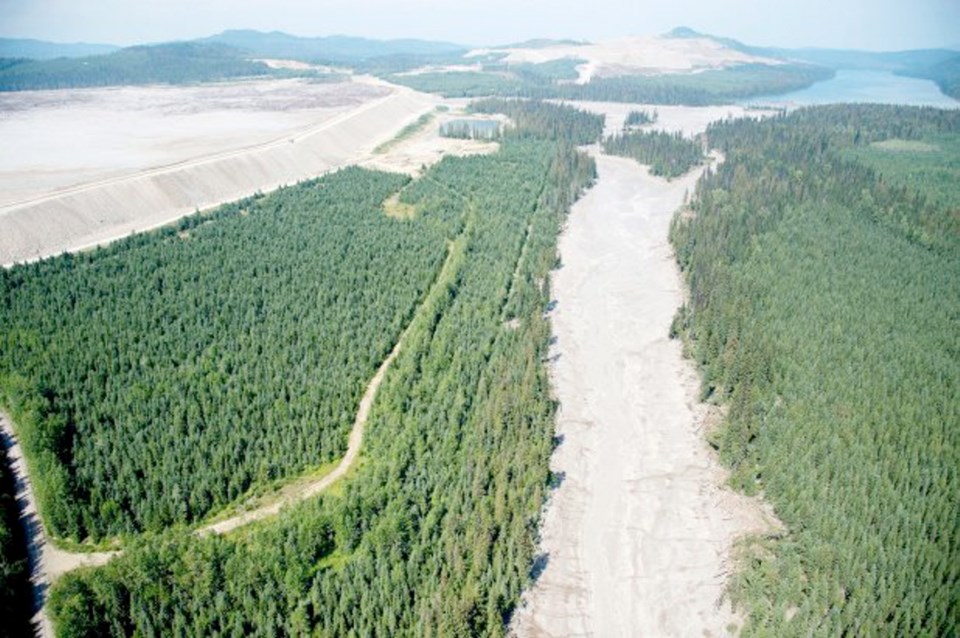Imperial Metals' $15-million property and business interruption insurance coverage is likely to fall short of the cleanup cost of the collapse of its mine waste dam at Mount Polley last week.
The company also has $10 million in third-party liability insurance, triggered if a party other than the company is responsible for damage.
While Imperial Metals says it is too early to provide a cleanup cost, the collapse of the mine waste dam in 1998 of the Los Frailes lead-zinc mine near Seville, Spain cost hundreds of millions of dollars.
Imperial Metals vice-president of corporate affairs Steve Robertson said Saturday he would be guessing at a cleanup cost at Mount Polley. The company has, however, vowed to do all it could to “make right” the effects of the dam collapse.
“I don’t know if it’s nowhere near (enough insurance) — it would we way to early to tell,” Robertson said in an interview.
Likely-resident Richard Holmes — a consultant fisheries biologist who does work for the Soda Creek Indian Band — is worried the cost of the cleanup could overwhelm the company.
A BMO Nesbitt Burns Inc. analysis pegged the cost to the company at $200-million, not including legal damages that could double that amount. Mount Polley is also Imperial Metals main cash contributor, accounting for 83 per cent of the company’s 2014 earnings per share.
Holmes, a 38-year Likely resident, said a full cleanup should include removing the sludge deposited in Quesnel Lake, and fully restoring Hazeltine Creek and Polley Lake, something he believes could cost hundreds of millions of dollars.
The cleanup is important because the creek is home to rainbow trout and Coho salmon that spawn there, said Holmes. The mouth of the creek is also a rearing area for sockeye and Chinook salmon, he said.
“I think mining companies should be concerned all over the world that this does get cleaned up properly. It’s a black-eye on the mining industry everywhere, especially in a western country like Canada where they tout the highest standards possible,” said Holmes. “Today, we are looking like a third-world country.”
Environment Minister Mary Polak has stressed that British Columbia has a polluter-pay model.
“(Imperial Metals) have significant assets and I, as yet, have not heard any concern from them with respect to affording the long-term costs of this,” said Polak.
Responding to the release last Friday of a warning letter from the engineering firm that designed Mount Polley’s dam and storage facility, Imperial Metals said there was nothing unusual about the letter.
At the end of its contract in 2011, Knight Piesold sent a letter to Imperial Mines and the B.C. Inspector of Mines that stated the dam and storage area was getting large and it was “extremely important” they be monitored and constructed properly.
Robertson said Saturday there was no disagreement about the dam when Knight Piesold left the project.
“I don’t think that’s anything out of the ordinary that they would make sure they establish (they) were only responsible for things up to this point — now it’s somebody else’s issue and provide lots of caveats and warnings in there,” said Robertson.
The letter’s release by Knight Priesold last Friday, came just days after a former foreman, Gerald MacBurney, said the company was not safely increasing the size of the dam. Larry Chambers, who was dismissed from Mount Polley at the end of 2013, has said he had also raised safety and environmental concerns at the mine.
Imperial Metals president Brian Kynoch has been adamant the company has followed their engineers’ advice.
Once Knight Piesold left the project, AMEC was hired to provide advice on raising the height of the dam to contain growing amounts of ground-up waste rock and water.
Robertson said the company followed both the advice of Knight Piesold and the new firm AMEC.
“We did monitor construction and operate properly,” said Robertson.
Mines Minister Bill Bennett said he also does not view the letter from Knight Piesold as unusual or that it was a warning.
The collapse of a 300-metre section of the rock and earth dam spewed 10 million cubic metres of water and finely ground rock containing potentially-toxic metals and chemicals into Polley Lake, Hazeltine Creek and Quesnel Lake.
The force of the mixture of water and mine waste from the storage facility scoured a large channel along Hazeltine Creek, also depositing trees and other debris in Quesnel Lake.
On Saturday, the province gave the go-ahead for Imperial Metals to begin to pump water out of Polley Lake into Hazeltine Creek.
The lake has risen about two metres after water from the collapse also poured into the lake and its outlet was plugged by the finely-ground rock from the tailings facility.
Residents are unhappy about dumping more mine water into Quesnel Lake, but the company has argued the water and the mine waste is relatively benign. The company also says the plug is at risk of letting go if it rains, which could send another rush of millions of cubic metres of water down Hazeltine Creek.
The province released its latest series of water test results from Quesnel Lake and Quesnel River on Saturday — including one sample near the mouth of Hazeltine Creek — which all passed drinking water guidelines.
The Pacific Salmon Commission, a joint Canada-U.S. agency to conserve and manage salmon, said Friday a lag between the timing of the spill and the return suggests substantial impacts on returning adult sockeye this year are unlikely.
Any impacts on salmon rearing in the area are more complex and will require longer to evaluate, said the commission.



